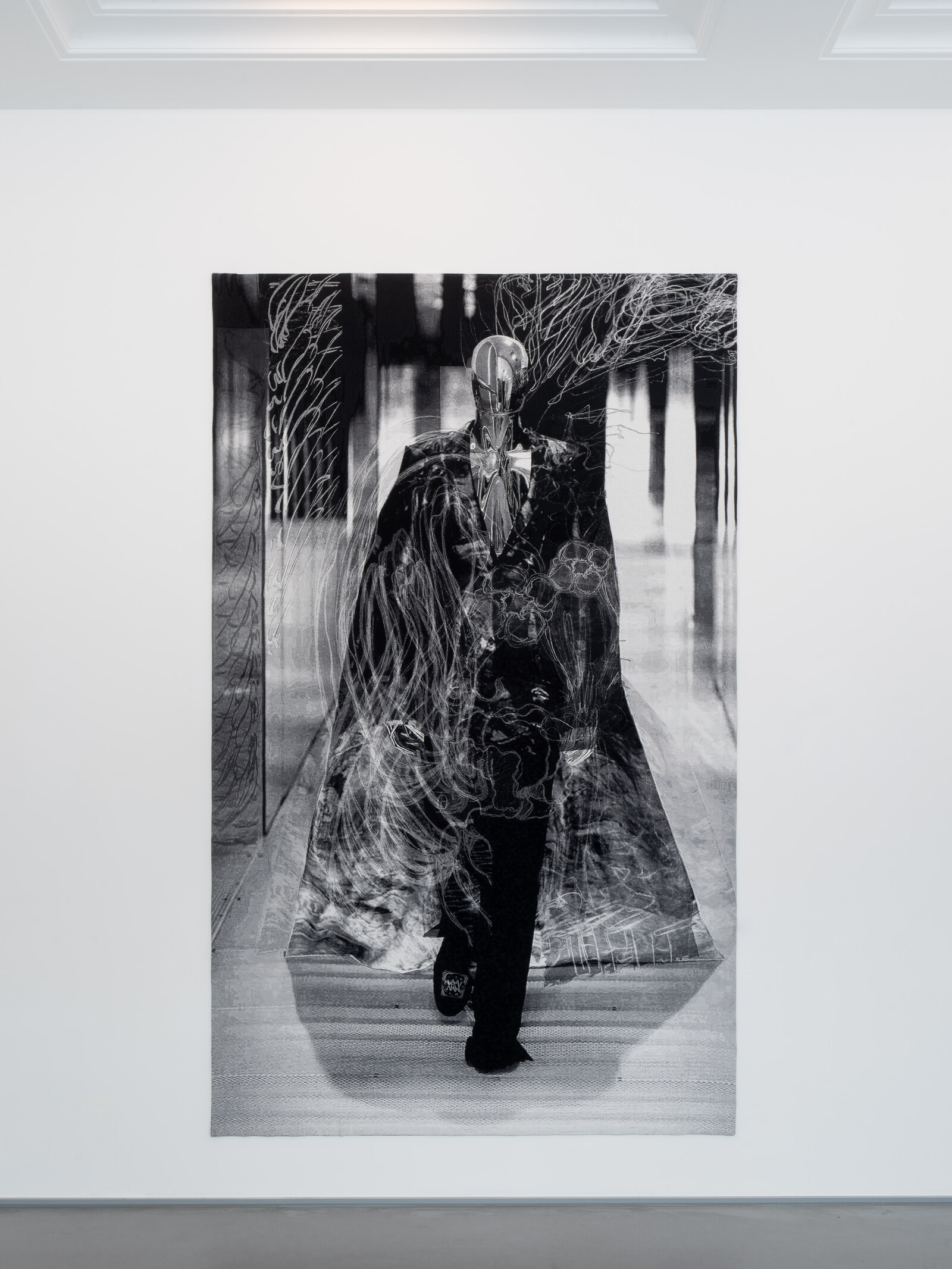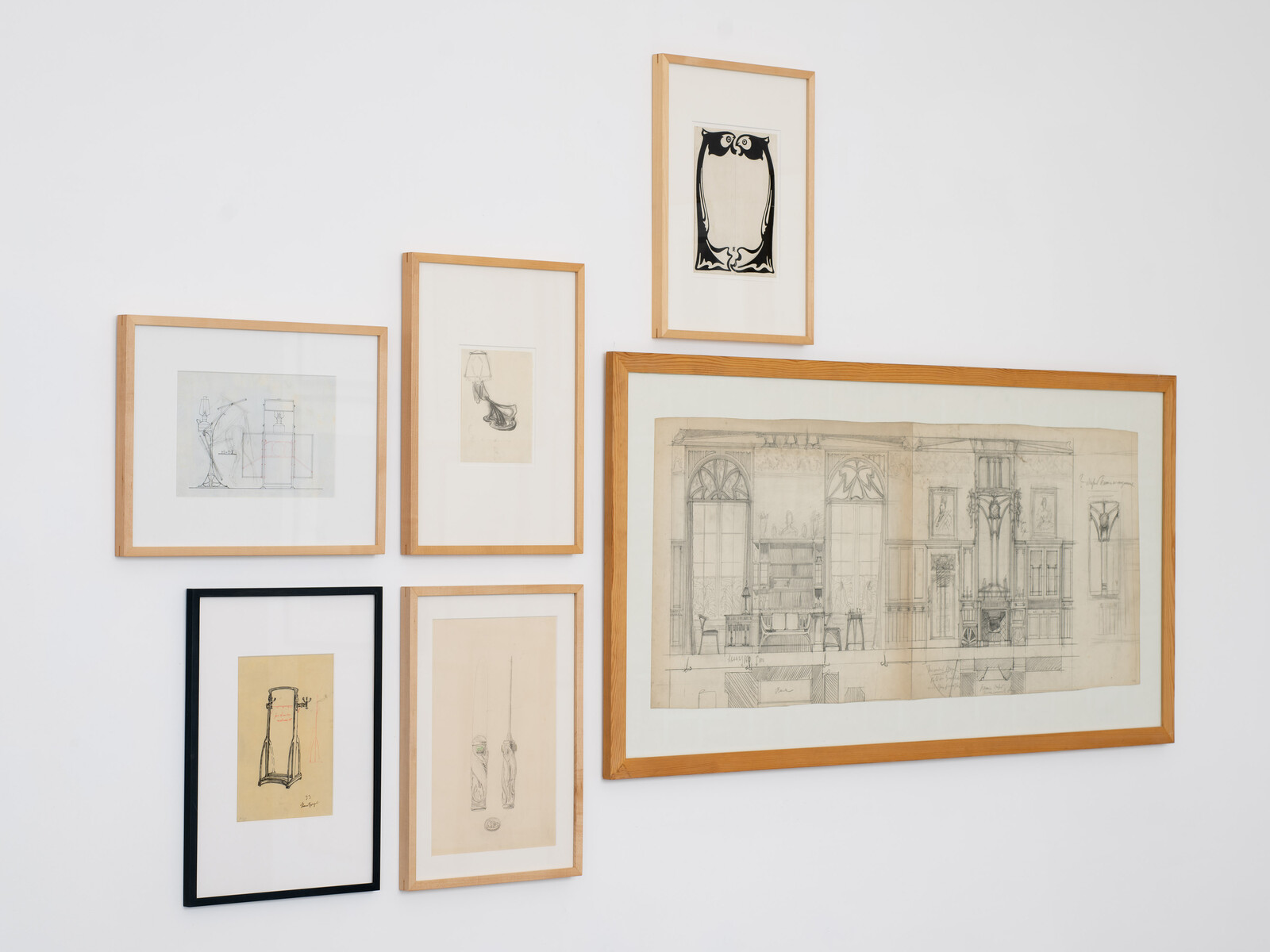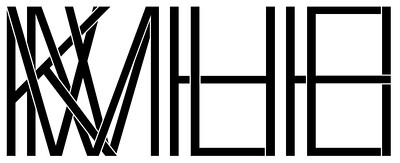Collection Satellite #8
June 10, 2022–February 5, 2023
Kaiser Wilhelm Museum
Joseph-Beuys-Platz 1
47798 Krefeld
Germany
The encounter between Shannon Bool (b. 1972) and Otto Eckmann (1865–1902) gives rise to an artistic dialogue spanning an entire century. Otto Eckmann, a graphic artist, painter, and typographer, was one of the most important designers of Jugendstil, a German variant of Art Nouveau, and a key contributor to the reform movement in Germany. With his efforts to combine art and everyday design, Eckmann became an important protagonist in the founding period of the Kaiser Wilhelm Museum around 1900. For example, he designed the museum’s first logo and created the tile decor for the luxurious Irish-Roman bath in the Krefelder Stadtbad. After Eckmann’s untimely death in 1902, part of his estate—a total of roughly 250 works and documents—was handed over to the museum. Among these are numerous sketchbooks and studies, correspondence, pencil and ink drawings, typography, and prints, as well as clothing fabrics and designs for furniture, lamps, stained glass windows, and drawn interior furnishings. “This important collection, which so eloquently portrays the vision of holistic design, has rarely been shown before,” says Director Katia Baudin. “The reappraisal of these holdings now combines with a contemporary look at the Jugendstil artist, opening up multi-layered, contemporary perspectives—a fundamental approach of the Collection Satellite series.”
For her works, the Canadian artist Shannon Bool collages motifs from everyday culture, fashion design, and architecture. Ornament and modernist austerity, abstraction and figuration merge together. Within the frameworks of Collection Satellite #8, she has embarked on a challenge to develop new works inspired by her encounter with Eckmann. The exhibition curator and Curator of Collections at the KWM, Magdalena Holzhey says: “The dialogue with the works of a contemporary artist brings Eckmann’s work to life and highlights the revolutionary potential inherent in his search for a new, universal language of form.” Bool’s approach to his work mixes playful and private aspects with political elements, an analytical with an intuitive approach, and craft with digital production techniques. “In doing so, she picks up on characteristics of Jugendstil and uncovers surprising facets of Eckmann’s work—such as his humorous and dynamic play of lines,” explains Holzhey. For the exhibition, Bool has developed an interior of sorts, consisting of three parts. On a large-format jacquard tapestry, quotations from various contexts overlap: a male model with the head of a mannequin, surrounded by details from Eckmann’s sketches, doodles, and intimate testimonies of his search for abstracted forms derived from nature. They seem to virtually create the body in its ambivalence between ancient and futuristic appearance. As exhibition furniture, Bool has designed a bench made of marble, in the natural drawings of which she intervenes in a complementary or interpretive way. Supplementing the interior are two blown-glass floor lamps modeled after old gas lanterns, which threaten to burst their frames as if they had taken on a life of their own—another humorous commentary on form and material at the dawn of modernism.
The exhibition will be accompanied by a catalog in German and English (Grass Publishers, Pulheim).
Since 2018, within the frameworks of the Collection Satellite series, the Kunstmuseen Krefeld has invited artists from various disciplines to engage with the collection, history, and architecture, thus enabling ever more surprising perspectives on the museum and its history. The Stiftung Kunst, Kultur und Soziales der Sparda-Bank West is partner of the Collection Satellite series.
Kunstmuseen Krefeld is a cultural institution of the city of Krefeld.










